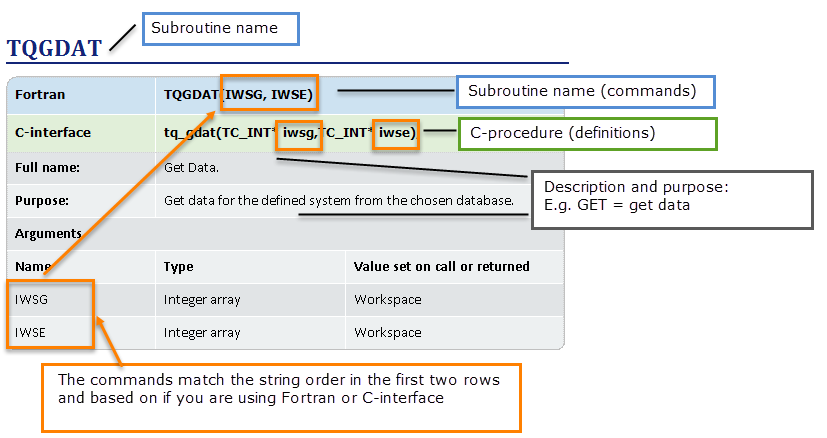SG3ERR or TQG3ERR
This is a logical function.
| Fortran |
ERROR=SG3ERR(IERR, SUBR, MESS) or ERROR=TQG3ERR(IERR, SUBR, MESS) |
|
|---|---|---|
| C-interface |
error=tq_sg3err(TC_INT* ierr,TC_STRING subr,TC_STRING_LENGTH strlen_subr,TC_STRING mess,TC_STRING_LENGTH strlen_mess); |
|
|
Full name: |
Get Error Code and Message. |
|
|
Purpose: |
This is a logical function which could be called after calling any TQ subroutine that can detect an error. If there is an error the function value is .TRUE and the appropriate error code is in IERR, the subroutine that detected the error in SUBR and the message in MESS. No printing on the error unit. This is useful if the calling program wants to print the message itself in an appropriate context. |
|
|
Comments: |
This should be used when the error testing subroutine wants to handle the printing of the error message itself. It is possible that the error message has already been printed by ST1ERR. If the C-interface is used the value returned is of type: TC_BOOL. |
|
|
Arguments |
||
|
Name |
Type |
Value set on call or returned |
|
IERR |
Integer |
Return the error code. |
|
SUBR |
Character*6 |
Return the name of the subroutine detecting an error. |
|
MESS |
Character*72 |
Return the error message |
Note the following conventions to distinguish between the programming languages.
- Routines starting with TQXXX, for example, TQGDAT, are in the Fortran interface
- Routines starting with tq_xxxx, for example tq_gdat, are in the C-interface.
- In Fortran, all routines are subroutines and do not return any values except where explicitly declared as functions.
- All the C procedures are declared as void and do not return any values except where explicitly otherwise declared.
An example of how to read the subroutine definitions.
